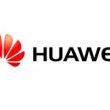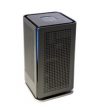

Smart City Expo World Congress (SCEWC) 2018 Huawei showcased its digital platform based on providing new ICT including Artificial Intelligence (AI), Internet of Things (IoT), big data and cloud, enabling city-wide intelligence and sustainable development across the international smart city industry. (more…)
November 19, 2018
Posted by: Anasia D'mello

Infotecs, the international vendor of cyber security and threat intelligence solutions, became a founding member of the Innovation Cluster 5G Berlin e.V. and is actively contributing to the digitalisation in the German capital and testing various 5G technologies. (more…)
November 13, 2018
Posted by: Anasia D'mello

According to a new report from the IoT analyst firm, Berg Insight, the installed base of smart electricity and gas meters in Europe will grow by 22% in 2018 to reach 151.9 million. (more…)
November 12, 2018
Posted by: Anasia D'mello

Gartner, Inc. highlighted the top strategic Internet of Things (IoT) technology trends that will drive digital business innovation from 2018 through 2023. (more…)
November 8, 2018
Posted by: Anasia D'mello

The growth in Wi-Fi continues unabated, with increasing volumes of Wi-Fi devices and traffic, an adoption breakthrough in Next Generation Hotspot (NGH) Passpoint, and increasing confidence around the commercial deployment and specification of next generation technology Wi-Fi 6 (802.11ax). (more…)
November 6, 2018
Posted by: Anasia D'mello

One of the biggest discussions as new technologies are evolving is the issue of cybersecurity. In a world where everyone is interconnected and mobile applications practically run our everyday lives, how do you keep users protected from hackers? (more…)
November 1, 2018
Posted by: Anasia D'mello

Calix, Inc. has launched the Calix GigaSpire powered by EXOS, the Experience Operating System. Subscribers are spending more than $2 billion (€1.75 billion) each year with consumer electronics retailers in a quest to improve their Wi-Fi and smart home connectivity. (more…)
Posted by: Anasia D'mello

The growth in Wi-Fi continues unabated, with increasing volumes of Wi-Fi devices and traffic, an adoption breakthrough in Next Generation Hotspot (NGH) Passpoint, and increasing confidence around the commercial deployment and specification of next generation technology Wi-Fi 6 (802.11ax). (more…)
Posted by: Anasia D'mello

According to a global survey of 800 CIOs, nearly three-quarters (74%) of IT leaders are concerned that Internet of Things (IoT) performance problems could directly impact business operations and significantly damage revenues. (more…)
October 31, 2018
Posted by: Anasia D'mello

A new report from Juniper Research has revealed that 775 million consumer vehicles will be connected via telematics or by in-vehicle apps by 2023, rising from 330 million vehicles in 2018. This is an average annual growth of 18.7% over the next 5 years. (more…)
Posted by: Anasia D'mello